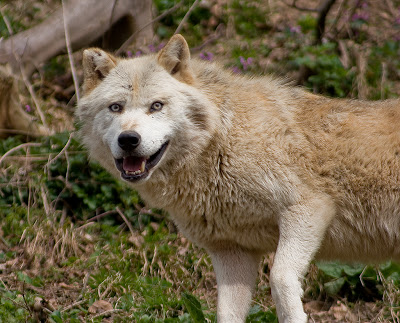The Life of Animals | Eurasian Wolf | The Eurasian Wolf (Canis lupus lupus), also known as the, European, Common or Forest Wolf is a subspecies of grey wolf which has the largest range among wolf subspecies and is the most common in Europe and Asia, ranging through Mongolia, China, Russia, Scandinavia, Western Europe and the Himalayan Mountains. Compared to their North American cousins, Eurasian wolves tend to have longer, more highly placed ears, narrower heads, more slender loins and coarser, tawnier coloured fur. Compared to Indian wolves, Eurasian wolves are larger, and have longer, broader skulls. In Europe, wolves rarely form large packs like in North America, as their lives are more strongly influenced by human activities. Because of this, Eurasian wolves tend to be more adaptable than North American wolves in the face of human expansion.
Comparative studies on the Mitochondrial DNA of various wolf subspecies have shown that the European line of wolves originated over 150,000 years ago, making them around the same age as North American wolves, but significantly younger than Asiatic subspecies.Comparative studies on the Mitochondrial DNA of various wolf subspecies have shown that the European line of wolves originated over 150,000 years ago, making them around the same age as North American wolves, but significantly younger than Asiatic subspecies.
The size of Eurasian wolves is subject to geographic variation with animals in Russia and Scandinavia being larger and bulkier than those residing in Western Europe, having been compared by Theodore Roosevelt to the large wolves of north-western Montana and Washington. One wolf killed in Romania was recorded to have weighed 72 kilograms (158 pounds) Italian wolves, excepting the tail, body length ranges between 110–148 cm, while shoulder height is 50–70 cm. Males weigh between 25–35 kg (55-77 lbs) and rarely 45 kg (99 lbs) The now extinct British wolves are known to have reached similar sizes to Arctic wolves.
The guard hairs of the shoulder measure 90 mm, but can reach 110–130 mm Wolves in Southern Europe tend to be more richly coloured than their northern relatives. Black coloured wolves (which result from wolf-dog hybridisation) are rarer in Eurasia than in North America due to wide spread reduction in wolf numbers preventing wolves from interacting with dogs, though currently 20-25% of Italy's wolf population is composed of black animals. Because of widespread habitat reduction and displacement of large prey, European wolf packs are usually smaller than North American ones, and generally form territorial ranges of 100–500 km², as opposed to North American packs whose territories encompass 80-2,500 km². Because of their longer association with urban civilisations, Eurasian wolves tend to be more adaptable than North American wolves in the face of human expansion; Southern European wolves successfully live in areas with much higher human densities than what North American wolves will tolerate. Unlike wolves in North America, many Eurasian wolf populations are forced to subsist largely on livestock and garbage in areas with dense human activity, though wild ungulates such as moose, red deer, roe deer and wild boar are still important food sources in Russia and the more mountainous regions of Eastern Europe. In the Białowieża Forest, wolves primarily feed on red deer; 75% of red deer mortality there was attributed to wolf predation. Although properly regulated wolf harvests and control have been largely accepted as compatible with maintaining wolf numbers to economically acceptable levels, overhunting and poaching are recognised as the main limiting factor in European wolf populations. With the exception of Russia, European wolf populations number 18,000-25,000.











